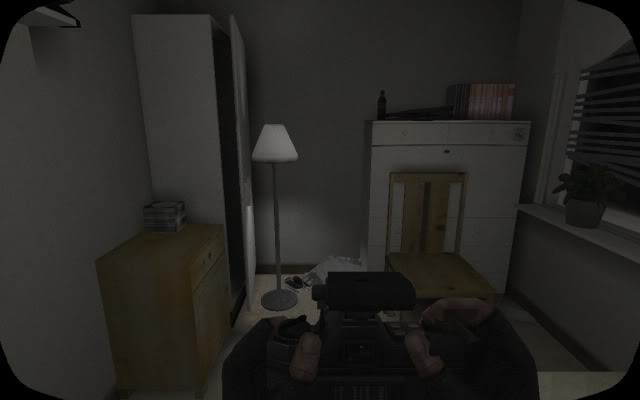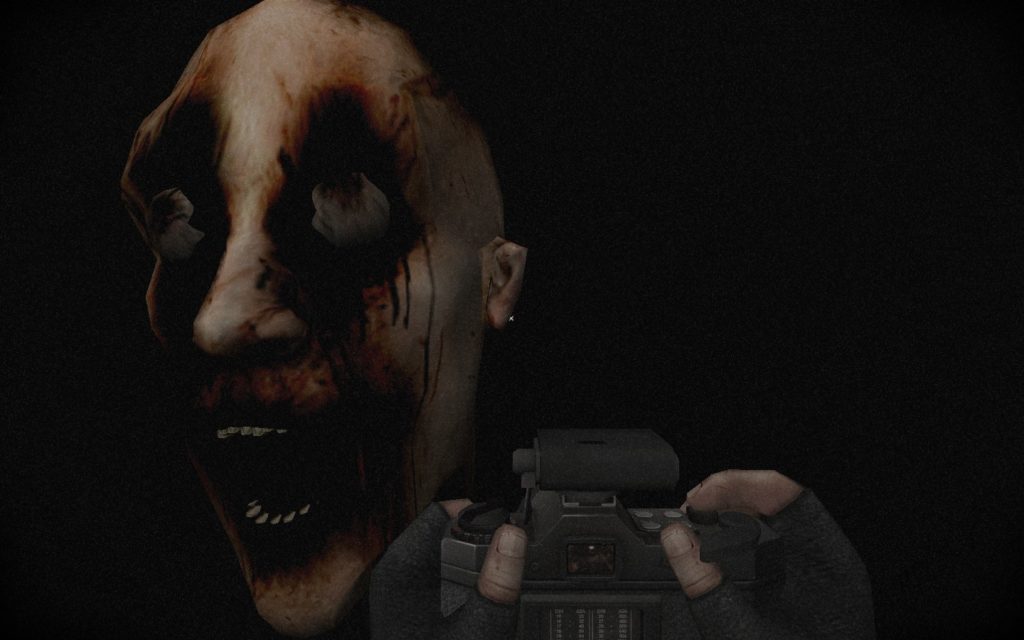Cry of Fear is a 4-year-old Half-Life horror mod, one of hundreds of such games. While it’s exceptional, if you don’t go out of your way to find good horror games, you probably haven’t even heard of it. And yet this game’s opening remains perhaps the best example of how game mechanics can scare you like nothing else– in part, because it did something that no other major game has done since. Not Outlast, not Resident Evil, no one. And they did it with a broken camera.
It’s origins were humble: It took four years to complete the mod in the developers’ free time (2008-2012). Around the one-year anniversary of its release, Valve patched Half-Life and made Cry of Fear incompatible, so the team took two months to make the game standalone. If not for that, Cry of Fear would never have been its own game. But even in mod form, it contained a beautiful slice of terror that couldn’t have been achieved in any other medium.
To explain why it works so well, without giving you a chance to see it for yourself first, would be a waste of good art. As it’s only available on PC (free here), I’ve also included a wordless walkthrough of the start of the game, below.
Our protagonist, a 19-year-old named Simon, finds an injured man on the backroads of a Swedish city. He’s then struck by a car. Horrible imagery flashes: Uncomfortable faces, recurring memories, a wall with increasingly bloody words. Finally, the message, “Take the camera.”
You come to in a normal, cramped apartment, holding a Polaroid camera. You take a picture; nothing happens except a camera flash. Then you open the only door and see an infinite black void with a white X floating in the air some distance away. If you walk into the void and hit the X with the camera flash (you have to be fairly close to trigger it), a door appears and swings open. Through the door are Xs on nonexistent walls, ceiling, and floor, waiting for your camera’s flash.
This is one of the lessons Cry of Fear’s developers clearly came to understand in their 4 years of development: What makes games get under the player’s skin so much more than any other medium is player consent. Games are an internalized medium, while others are externalized. If you watch a horror movie, you can close your eyes and plug your ears, and it will continue without you. You can shift your focus. If you’re reading a horror story, you have to continue reading to make it happen, but dread and disgust prevail; there isn’t much immediacy to it.
Games are different. Not only do you have to continue in the sense of continuing to look (as in a book), but it takes physical consent: Pushing a button. It may not be much, but the fact that it makes tangible your involvement in the events means that your body, physically, literally, is now a part of it. You can’t passively let it happen. You have to actively involve yourself in the horror.

In Cry of Fear’s case, it’s brilliantly done, asking the player to leave a safe space and subject themselves to the unknown in intense bursts. It’s entirely at your own pace; nothing’s chasing you, it’s just you needing to move forward for your own sake. You’re defenseless, only holding a camera that can’t even record your fate, and it takes both hands to use. Its flash blurs your vision and subsequent movement, and guarantees a flinch (especially if you’re playing in the dark), causing brief moments of panic before you even process if they were justified.
And, just as brilliantly, the flinches aren’t always justified. Some Xs reveal cryptic messages, which linger for less time than it takes for your brain to process them, so you don’t know what they said until they’re gone and you can’t verify. Bodies, prone, hanging, twitching, appear for a moment but do nothing to come after you. Progress through doors, grates, and broken mirrors leads you forward. It’s usually jarring, but not exceptionally scary beyond putting yourself into new, unexplored voids. Sometimes, you’ll have to sprint to a distant floating X, knowing a jump scare could happen at any second, but knowing you can’t go back.
Most importantly among these scares are the nonexistent ones. Some Xs do nothing when flashed except disappear, leaving you waiting for the other shoe to drop. For a telling comparison, suppose someone hands you a gun. You know it can hold 6 shots. When firing, however, sometimes you just hear a click, and nothing is fired. Was there no bullet? Is something wrong with the gun? Or is something about to go wrong?

In the interest of preserving the game’s integrity, I won’t say exactly how this section ends, but it makes some really smart decisions with regards to player expectations– unsurprising, given how well constructed the section is as a whole. Then the game returns to being a creepy, inexplicable, back-alley sprint through horrific, twisted versions of reality with psychotics and monsters. The rest of the game is also a smart slow-burn, actually has some affecting things to say about trauma, and plays with horror game convention in some fascinating ways.
But it’s those first 10 minutes that anyone can walk up to and immediately understand why it’s so terrible to play. And even watching it imparts the awful, gut-wrenching feeling each flash of the camera holds. It’s the sudden recognition of the world’s “rules,” and the slower, creeping understanding of what that means for the player, completely at the mercy of that world.
Most importantly, however, is that it strips the player of control over their fate, while giving the player absolute control over progression. It asks you to consent to a horrible fate, but doesn’t give it to you. You’re ready for the poisoned morsel you know you’ll have to eat, but they keep handing you sour ones, or even tasty ones, and then asking again, “Are you ready to be poisoned?” And you keep saying yes. And when it does come, it’s not how you’ve been conditioned to expect it, and that makes it all the worse.
Maybe the greatest horror that games like Cry of Fear impart is the realization that even when we take on horror on our own terms, we can’t stop it. It’s the sense of lost control, or perhaps that control can be meaningless. In the case of a video game, like Cry of Fear, you’ve chosen to subject yourself to it. But what about if, in your life, you can only delay or hurry along some horror? What kind of person will you be then? Does it matter?

